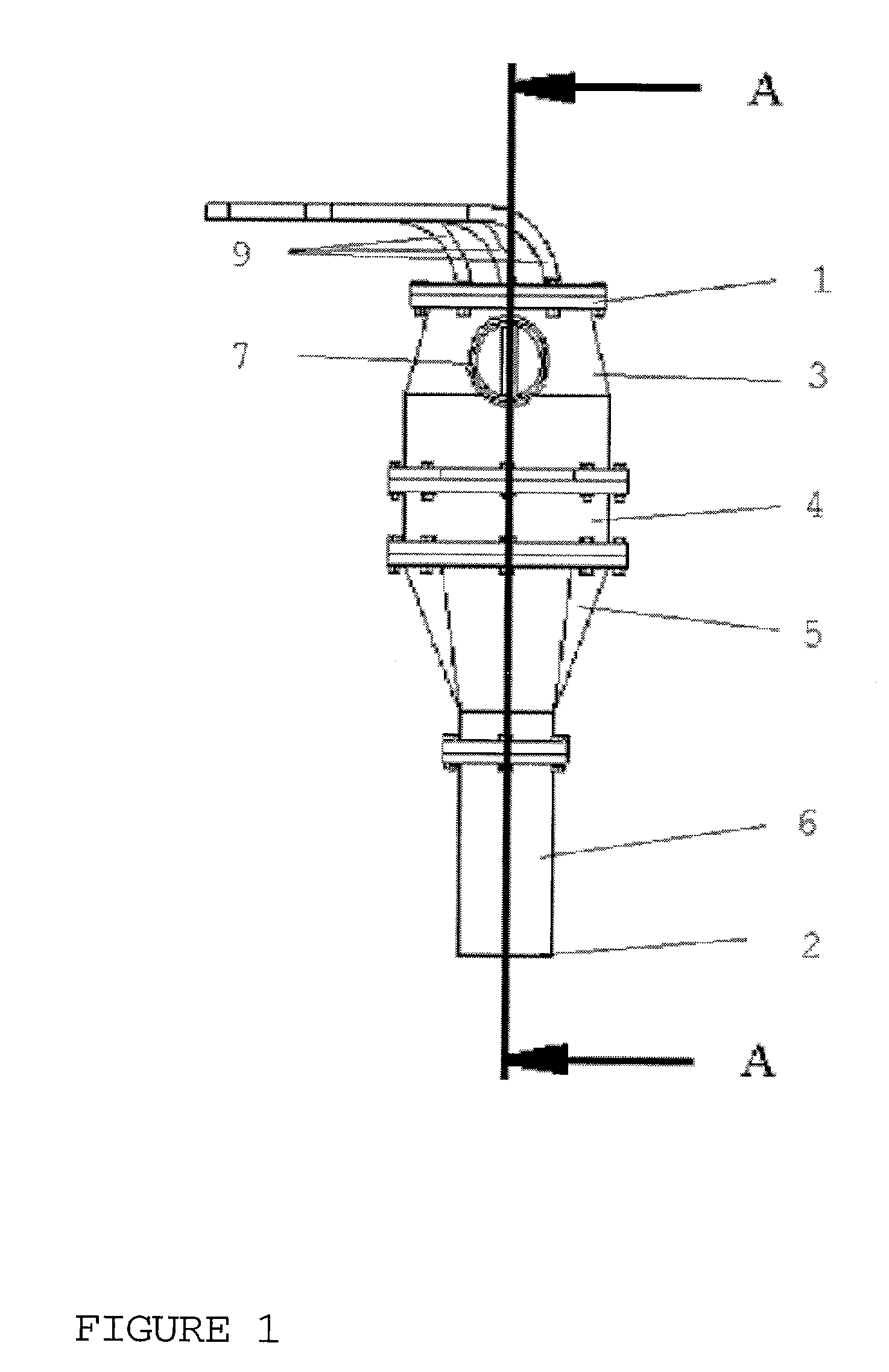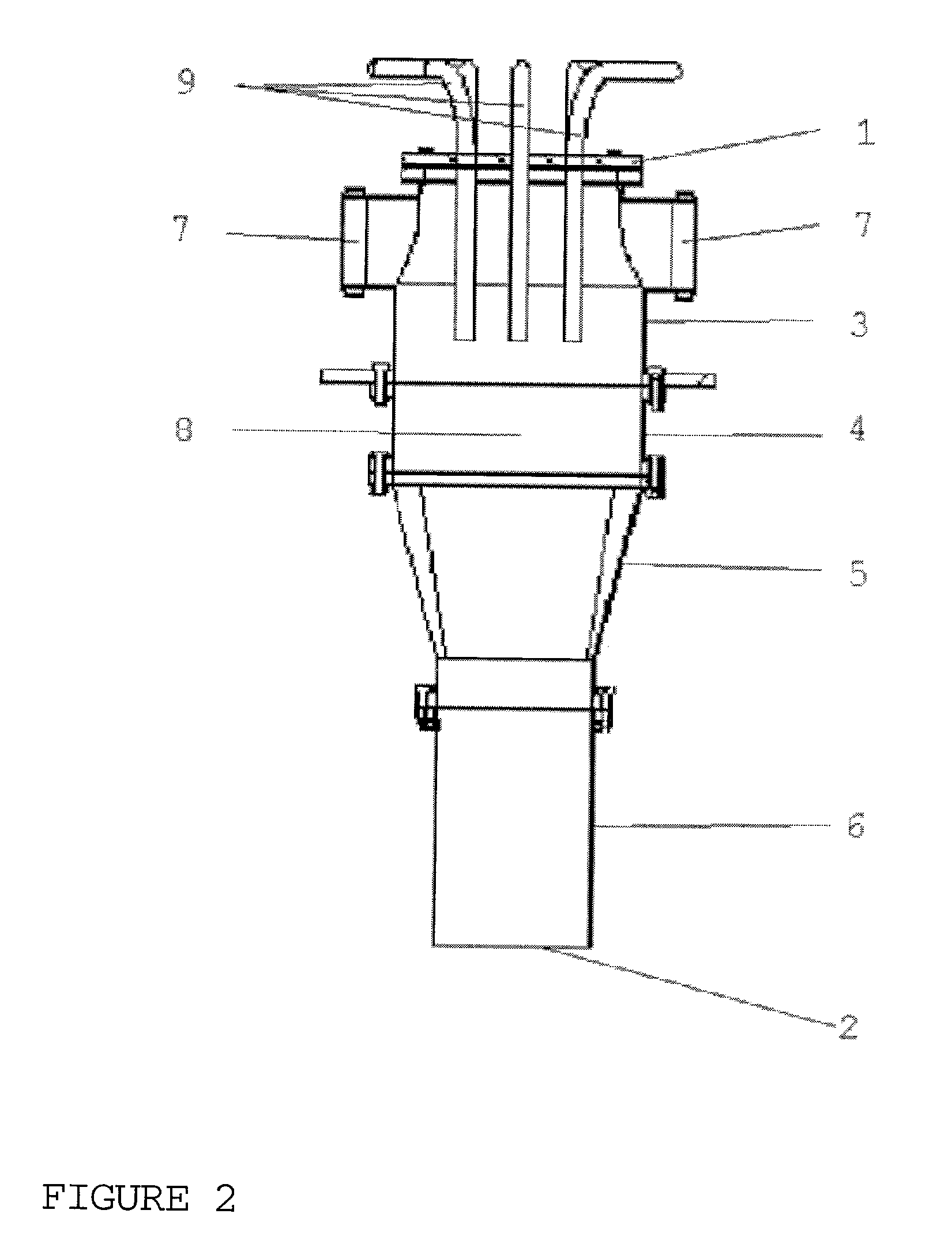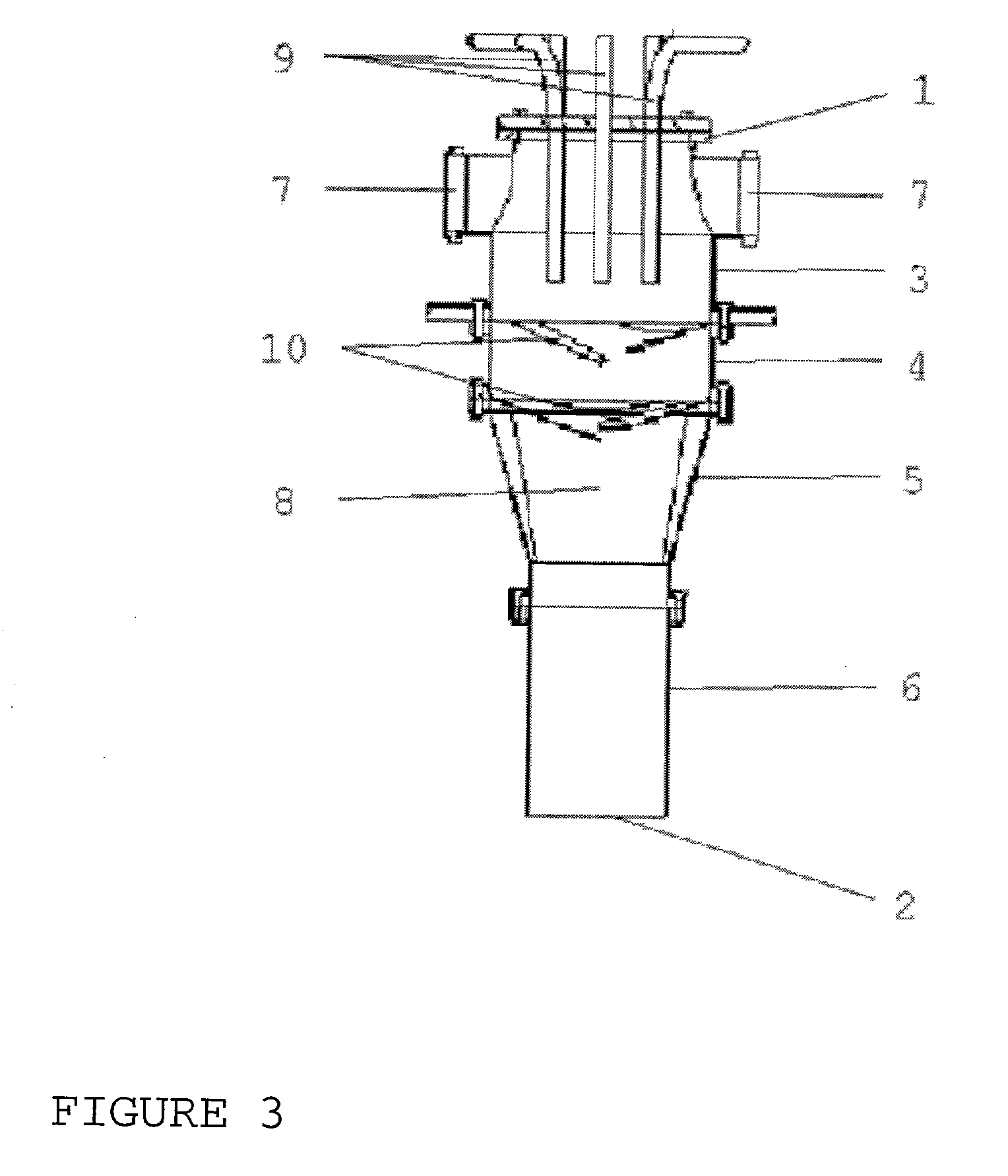Frozen ice confection
a technology confections, applied in the field of frozen ice confections, can solve the problems of limited types of products which can be produced, inability to generally suitably be used, lack of control,
- Summary
- Abstract
- Description
- Claims
- Application Information
AI Technical Summary
Benefits of technology
Problems solved by technology
Method used
Image
Examples
example 2
Validation of Multi-injection Soft Fruit Inclusion Trials at the Factory Scale
[0084] The incorporation of fruit pieces into vanilla ice cream using a variety of nozzle configurations according to the invention was investigated.
[0085] A 5-liter multi-injection nozzle was mounted onto an in-line filler. Ice cream was extruded and cut by heated blades, samples were collected for evaluation. A number of experiments were conducted with no static mixers, one or two static mixers in the nozzle. Two types of static mixers, with different baffle arrangements, were tested. When there was no static mixer element, the same flanges used to hold the static mixers remain in the nozzle, so the nozzle overall height was unchanged throughout all experiments. In most of experiments conducted, the fruit feeding pipes into the nozzle were straight. In some experiments, however, one or more of the fruit pipes were bent to test whether change of the pipe position can alter fruit distribution within the no...
example 3
Estimation of the Recovery Rate of Fruit Inclusions from Ice Cream
[0093] A sample of 500 g of ice cream containing fruit pieces was placed in a sieve (1 mm mesh size) and rinsed under warm running water, with very gentle agitation. After all of the ice cream had been washed away, the fruit pieces left in the sieve were collected, counted and weighed. The amount of fruit pieces (by weight or by number) recovered divided by the amount originally incorporated into this quantity of ice cream is the recovery rate.
2 Recovery rate Recovery rate Product (by weight) (by number) Ice cream with strawberry inclusions .about.50% .about.70% produced by using a conventional fruit feeder and -5.degree. C. ice cream Ice cream with strawberry inclusions .about.70% .about.90% produced by using a process according to the invention and -15.degree. C. ice cream
PUM
| Property | Measurement | Unit |
|---|---|---|
| angle | aaaaa | aaaaa |
| size | aaaaa | aaaaa |
| angle | aaaaa | aaaaa |
Abstract
Description
Claims
Application Information
 Login to View More
Login to View More - R&D
- Intellectual Property
- Life Sciences
- Materials
- Tech Scout
- Unparalleled Data Quality
- Higher Quality Content
- 60% Fewer Hallucinations
Browse by: Latest US Patents, China's latest patents, Technical Efficacy Thesaurus, Application Domain, Technology Topic, Popular Technical Reports.
© 2025 PatSnap. All rights reserved.Legal|Privacy policy|Modern Slavery Act Transparency Statement|Sitemap|About US| Contact US: help@patsnap.com



